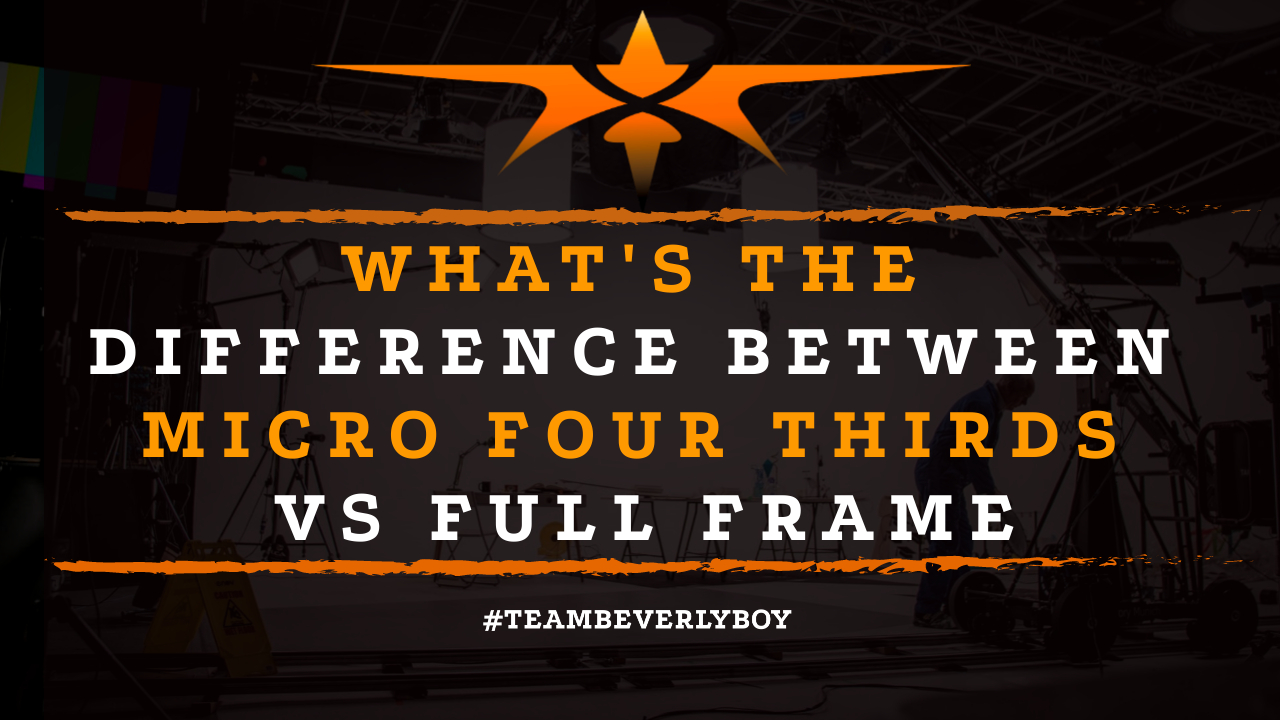
What’s the Difference Between Micro Four Thirds vs Full Frame
As a cinematographer, finding the best camera for your needs is an ongoing pursuit that you’ll likely engage in several times over during your career. As you learn more, become more educated on the various equipment and abilities of each style and type of camera, and gain additional skills in capturing a mix of both video and still images, you’re likely to seek various cameras with various settings and internal components. When it comes to choosing the most viable camera, much of the decision boils down to the potential number of megapixels that each camera can deliver. And, if you’re interested in producing footage for the big screen, you’re likely to face the decision between micro four thirds vs full frame cameras at least at some point in your career.

So what’s the difference between the two? Does a micro four thirds camera provide the same image quality and size outputs that a full frame camera can offer?
We’re comparing the two options and taking a deep look at the impact that camera sensors play in the production of top quality footage.
What is Micro Four Thirds?
A micro four thirds (MFT) camera sensor represents a mirrorless, interchangeable lens system that reduces the size and thickness of the digital interchangeable-lens type camera so that many of the same features available with a full-frame camera or larger piece of equipment can be utilized.
The 4/3-type sensor is seen used in other Four Thirds System cameras and represents exceptional image quality which is expected of any digital SLR camera out the box.
When looking at micro four thirds vs. full frame sensors, the four thirds system maintains a unique ability to change lenses and maintain quality images as it also provides plenty of expansion for shooting well beyond the viewfinder.
These camera systems make capturing movement a breeze and incorporate a number of desired features that a smaller, more compact camera would typically not be expected to have.
What is Full Frame?
A full frame camera sensor is equivalent to the size of a 35mm film format. Likewise, many DSLR cameras can also utilize crop sensors or, the relatively new format, the micro-four thirds sensor.
Full frame cameras represent great flexibility in terms of depth of field and make achieving shallow depth-of-field easier than cropped sensor cameras and various other units.
Difference Between Micro Four Thirds vs Full Frame Cameras
The difference between micro four thirds vs full frame cameras is the size of the sensor and the field of view when producing images. Focal length is also different when using a micro four thirds camera vs full frame cameras.
In fact, a full frame camera is the basis for focal length measurements whereas crop-sensor cameras measure focal length using a multiplier, such as 1.5X.
Micro four thirds cameras produce a shallow depth of field at similar focal length when compared to full-frame cameras, resulting in an output that is slightly different for the end image.


